Country guides

Things to do in Indonesia
When it comes to attractions, Indonesia is as varied as its 17,000 islands, and visitors will be swamped with an endless list of things to see and do. There are cultural, historical, religious and natural attractions aplenty, and as such it may be wise to select one or two islands to explore in order to avoid suffering from a sightseeing overload.
A popular place to tackle first is Java, a touristic favourite not least because of the incredible volcanic scenery in its Bromo-Tengger-Semeru National Park. The island is also home to the grungy metropolis of Jakarta and the historic Yogyakarta. On Java, travellers can find anything from glitzy nightclubs to ancient ruins to traditional puppet theatre. If the laid-back aesthetic of "Eat Pray Love" is what you are after, head straight to Bali. This hugely popular island has been luring in visitors for years thanks to its white sandy beaches, endless surfing spots and inland cultural attractions.
For a wider range of natural attractions, one can get lost on the mammoth island of Sumatra, which offers visitors traditional towns, such as Bukit Lawang and Bukittinggi, and stunning landscapes. Bigger yet is Borneo, which shares its jungle treks with visitors and native orangutans alike and is a delight to explore.
A lumbering ferry line connects all the main islands and attractions and is an adventure itself. The best time is visit is between May and September, during the dry season, which also makes transport easier.
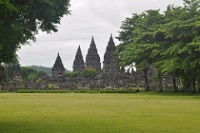
Prambanan Temple Complex
Rivalling the Buddhist monument of Borobudur, this magnificent Hindu temple is the largest in Java and arguably the most beautiful in Indonesia. Prambanan was built in the 9th cent…
Prambanan Temple Complex
Rivalling the Buddhist monument of Borobudur, this magnificent Hindu temple is the largest in Java and arguably the most beautiful in Indonesia. Prambanan was built in the 9th century, possibly to compete with the splendour of Borobudur, or to celebrate the return to power of the Hindu dynasty in Java at the time. The complex is dominated by three main temples, Shiva, Brahma and Vishnu, each dedicated to their namesake, and the walls are decorated with exceptional relief carvings depicting scenes from the famous Hindu classic tale of Ramayana.
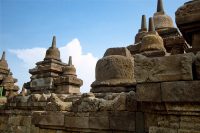
Borobudur
One of the greatest Buddhist monuments in South East Asia, Borobudur was built in the 8th century and stands on top of a hill surrounded by volcanoes and green fields. This UNESCO …
Borobudur
One of the greatest Buddhist monuments in South East Asia, Borobudur was built in the 8th century and stands on top of a hill surrounded by volcanoes and green fields. This UNESCO World Heritage Site is an immense, multi-tiered structure, crowned by a Great Stupa (bell-shaped monument) that stands 128ft (40m) above the ground. It is part of a 2.5 mile-long (4km) chain of smaller temples, with the Mendut Temple containing three exquisitely carved giant statues of Buddha and two disciples inside. The terraces of Borobudur are covered in sculpted reliefs, their narrative panels illustrating Buddhist beliefs and teachings, and covering an estimated length of 3.5 miles (6km).
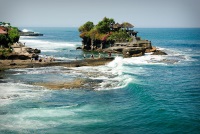
Tanah Lot
Meaning 'land in the middle of the sea', Tanah Lot is an exquisite sea temple built atop a rock formation off the island of Bali. A very popular tourist spot and a great location f…
Tanah Lot
Meaning 'land in the middle of the sea', Tanah Lot is an exquisite sea temple built atop a rock formation off the island of Bali. A very popular tourist spot and a great location for photographs, Tanah Lot sits on a rocky island, in waters occupied by poisonous sea snakes that are believed to guard the temple from evil spirits and intruders. Despite the alleged presence of the snakes it is possible (and fun) to walk or wade to the temple cave at low tide. The temple was built by one of the last priests to arrive in Bali from Java in the 16th century and unfortunately the main temple can't be entered.
Travellers may also want to visit Pura Luhur Uluwatu, which is a two-hour drive south of Tanah Lot. Renowned for its magnificent clifftop setting, it is another famous sea temple that protects Bali from evil sea spirits. Like Tanah Lot, only Hindu worshippers are allowed to enter the main temple, though the beautiful location and the daily sunset Kecak dance performances make visiting more than worthwhile. Of the two temples, Uluwatu is said to have the better sunset but, unlike Tanah, visitors will have to navigate the local monkey population.
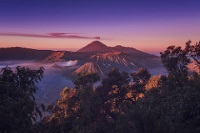
Bromo-Tengger-Semeru National Park
The Bromo-Tengger-Semeru National Park encloses spectacular volcanic landscapes and one of the most impressive natural sights in Indonesia. The ancient Tengger crater in its midst …
Bromo-Tengger-Semeru National Park
The Bromo-Tengger-Semeru National Park encloses spectacular volcanic landscapes and one of the most impressive natural sights in Indonesia. The ancient Tengger crater in its midst stretches for six miles (10km) and within its sheer volcanic walls are three peaks: Batok, Kursi and the smoking Mt Bromo. Thousands of tourists make the journey up Mt Bromo for the unforgettable spectacle at sunrise (during the dry season), when the surrounding landscape takes on an otherworldly quality. The views from the top and into the smoking crater are unbelievable.
Website www.bromotenggersemeru.org/
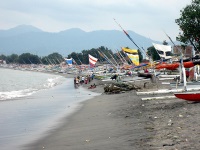
Ampenan
Ampenan-Mataram-Cakranegara-Sweta, or more simply referred to as Ampenan, is a vibrant district located on Indonesia's lush Lombok Island. The sprawling metropolis is comprised of …
Ampenan
Ampenan-Mataram-Cakranegara-Sweta, or more simply referred to as Ampenan, is a vibrant district located on Indonesia's lush Lombok Island. The sprawling metropolis is comprised of four towns, the boundaries of which are indistinguishable to casual holidaymakers. A number of the destination's shrines and temples are open to visitors, the best of which are located around the Mayura Water Palace, which dates from 1744 and was used by the royal court during the Balinese rule of Lombok. Ampenan's market is the area's primary attraction and is located along the main road to Senggigi, north of the city proper.
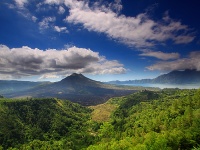
Gunung Batur Volcano
The still-active Gunung Batur volcano is known as Bali's second holiest mountain and symbolises the female element of the island. The male element is symbolised in Gunung Agung, a …
Gunung Batur Volcano
The still-active Gunung Batur volcano is known as Bali's second holiest mountain and symbolises the female element of the island. The male element is symbolised in Gunung Agung, a neighbouring smaller volcano. The walk up Mount Batur is not easy, but the views are spectacular and, if travellers are lucky, they might even spot a few monkeys along the way. Gunung Batur rises from a volcanic crater that also contains a lake and the view of this otherworldly landscape from the crater rim is spectacular. Visitors should look out for the remnants of black lava flows on the western side of the mountain from this vantage.
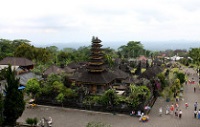
Pura Besakih
Locally known as the Mother Temple of Bali, Pura Besakih is located on the slopes of Mount Agung and is the biggest and holiest of all Balinese temples. Dating back to the 14th cen…
Pura Besakih
Locally known as the Mother Temple of Bali, Pura Besakih is located on the slopes of Mount Agung and is the biggest and holiest of all Balinese temples. Dating back to the 14th century, the three main temples are dedicated to Shiva, Brahma and Wisnu, and another 18 separate sanctuaries belonging to different regencies and caste groups surround these. The complex has been built over centuries and is very impressive. Despite the hassle of dealing with insistent local touts, this is a beautiful and interesting attraction and many will find it rewarding.
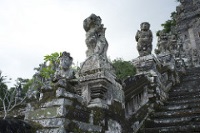
Pura Kehen
One of the most valued temples in Bali, Pura Kehen is a garden temple located in the town of Bangli in East Bali and can be traced back to the 11th century. Founded by Sri Brahma K…
Pura Kehen
One of the most valued temples in Bali, Pura Kehen is a garden temple located in the town of Bangli in East Bali and can be traced back to the 11th century. Founded by Sri Brahma Kemuti Ketu, Pura Kehen is the second largest temple on Bali and the most sacred in the region. Many visitors are mesmerised by the temple's grandeur and the steep steps leading dramatically up to the gateway. Like the Mother Temple of Pura Besakih, Pura Kehen was built on the slope of a hill and has eight terraces.
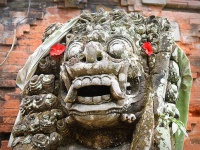
Batubulan
The small village of Batubulan is marked by stone figures of gods and demons on the side of the road. Known mostly for its stone carvings, Batubulan is a popular centre for cultura…
Batubulan
The small village of Batubulan is marked by stone figures of gods and demons on the side of the road. Known mostly for its stone carvings, Batubulan is a popular centre for cultural tourism and attracts travellers looking for a unique souvenir to take home with them. Visitors to the village can even enjoy visiting the workshops and watching the artists at work. Batubulan actually means 'moonstone' and stone carving has been the main industry of the village for a long time. The temples in the area reflect the traditional talent of the local inhabitants and some remarkable stone carvings are on display at temples such as Pura Puseh.
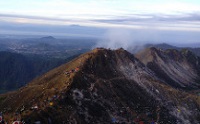
Berastagi
The town of Berestagi is famed not only for its passion fruit, but also for the two active volcanoes on its doorstep: Gunung Sibayak and Gunung Sinabung. Gunung Sibayak boasts fant…
Berastagi
The town of Berestagi is famed not only for its passion fruit, but also for the two active volcanoes on its doorstep: Gunung Sibayak and Gunung Sinabung. Gunung Sibayak boasts fantastic hot springs whose warm waters are not only open to the public, but are also believed to have therapeutic properties. More active travellers can climb this mountain, earning breathtaking views over the island of Sumatra from the top. This is the most commonly climbed volcano in Sumatra as the hike to the top is comparatively easy, with beautiful and unusual scenery to enjoy along the way.
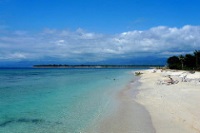
Gili Islands
Situated a few miles off the northwest coast of Lombok, the three Gili Islands of Gili Trawangan, Gili Meno and Gili Air were 'discovered' by backpackers in the '80s and, until rec…
Gili Islands
Situated a few miles off the northwest coast of Lombok, the three Gili Islands of Gili Trawangan, Gili Meno and Gili Air were 'discovered' by backpackers in the '80s and, until recently, remained a laid-back haven for budget travellers in search of a peaceful and secluded holiday paradise. The islands are surrounded by glorious soft sandy beaches, colourful coral reefs and crystal clear turquoise waters, and are ideal for diving.
Visitors can also attend an Indonesian cooking class, relax at a spa, go horseback riding or enjoy a variety of watersports. There are almost no roads or motor vehicles on the islands, with scooters and donkey-drawn carts acting as their replacements. Small ferries transport guests between the Gili Islands, none of which are more than twenty minutes apart.
Gili Trawangan is considered the party island and caters to a decidedly upmarket crowd. Bars usually stay open till 4am and the famous Full Moon parties are held on the southern beaches. Gili Meno is the smallest and quietest of the three, its pristine coral beaches and easy-going charm offering the perfect escape for honeymooners. Gili Air is closest to the main island of Lombok, and its character lies somewhere between the tranquility of Gili Meno and the bustle of Gili Trawangan.
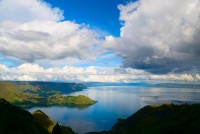
Lake Toba
The holiday paradise of Lake Toba is embedded in the northern highlands of Sumatra and is surrounded by steep and fertile mountains. Filling in a giant volcanic crater, the lake ha…
Lake Toba
The holiday paradise of Lake Toba is embedded in the northern highlands of Sumatra and is surrounded by steep and fertile mountains. Filling in a giant volcanic crater, the lake has depths of up to 1,680 feet (525m) in places. In the middle of Lake Toba sits the jade-green island of Samosir, which is thought to be the origin of the friendly Batak people. Evidence of their culture and traditions is visible in the little Batak villages, with their characteristic curved roofs, and the traditional dance performances at Simanindo's Batak Cultural Centre. There are also several hot springs near Pangururan, which attract visitors.


